

Partner Arthur Lett-Haines, buried together
Queer Places:
St Cyprian's School, 67 Summerdown Rd, Eastbourne BN20 8DQ, Regno Unito
Charterhouse School, Charterhouse Rd, Godalming GU7 2DX, Regno Unito
Académie Colarossi, 10 Rue de la Grande Chaumière, 75006 Paris, Francia
2 Carlyle Square, Chelsea, London SW3 6EX, UK
The Bowgie, Trewerry Mill, St Newlyn East, Newquay TR8 5GS, UK
39 Rue Liancourt, 75014 Paris, France
Corfe, Taunton TA3 7AW, Regno Unito
32 Great Ormond St, London WC1N, Regno Unito
The Pound, Hadleigh Rd, Colchester CO7, Regno Unito
Benton End House, Benton St, Hadleigh, Ipswich IP7 5AR, Regno Unito
Hadleigh cemetery, Hadleigh, Ipswich IP7, Regno Unito
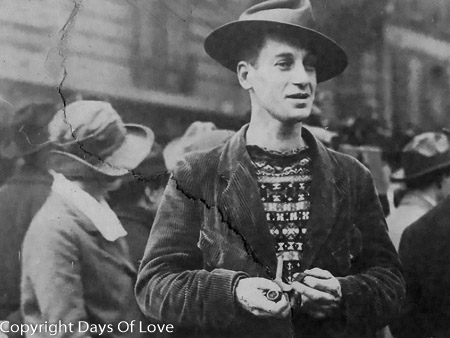 Sir
Cedric Lockwood Morris, 9th Baronet[1] (11 December 1889 – 8 February 1982) was a British artist, art teacher and plantsman. He was born in Swansea in South Wales, but worked mainly in East Anglia. As an artist he is best known for his portraits, flower paintings and landscapes.
Cedric Morris and his partner, Arthur Lett-Haines, were good friends with Lady
Duff Twysden, who served as the model for Lady Brett Ashley in
Ernest Hemingway’s The Sun Also Rises (1927). In the novel, Lady Ashley is accompanied by a group of young men, among whom are the tall, dark one, named Lett, as well as the wavy blond one, who is both unworthy and inconsequential to be given a name (a clear allusion to Morris’ distinctive golden curls). Ashley’s male companions were offensive precisely because of their homosexuality, especially to the story’s protagonist, Jake Barnes, whose own gendered and sexual identity was questionable at best. In another report, Lett is the guide to the underworld, initiating the reporter into the sultry and seedy nightclubs he and his set frequented; a portrayal not dissimilar to the one provided by Hemingway.
Sir
Cedric Lockwood Morris, 9th Baronet[1] (11 December 1889 – 8 February 1982) was a British artist, art teacher and plantsman. He was born in Swansea in South Wales, but worked mainly in East Anglia. As an artist he is best known for his portraits, flower paintings and landscapes.
Cedric Morris and his partner, Arthur Lett-Haines, were good friends with Lady
Duff Twysden, who served as the model for Lady Brett Ashley in
Ernest Hemingway’s The Sun Also Rises (1927). In the novel, Lady Ashley is accompanied by a group of young men, among whom are the tall, dark one, named Lett, as well as the wavy blond one, who is both unworthy and inconsequential to be given a name (a clear allusion to Morris’ distinctive golden curls). Ashley’s male companions were offensive precisely because of their homosexuality, especially to the story’s protagonist, Jake Barnes, whose own gendered and sexual identity was questionable at best. In another report, Lett is the guide to the underworld, initiating the reporter into the sultry and seedy nightclubs he and his set frequented; a portrayal not dissimilar to the one provided by Hemingway.
Cedric Lockwood Morris was born on 11 December 1889 in Sketty, Swansea, the son of George Lockwood Morris, industrialist and iron founder, and Wales rugby international, and Wilhelmina Cory, who had not only studied painting but was widely recognized for her highly accomplished needlework. He had two sisters - Muriel, who died in her teens, and Nancy (born in 1893). On his father's side he was descended from the first baronet Morris, whose sister Margaret married Noel Desenfans and helped him and his friend, Francis Bourgeois to build up the collection now housed in the Dulwich Picture Gallery. Cedric was sent away to be educated, at St Cyprian's School, Eastbourne, and Charterhouse School in Godalming.
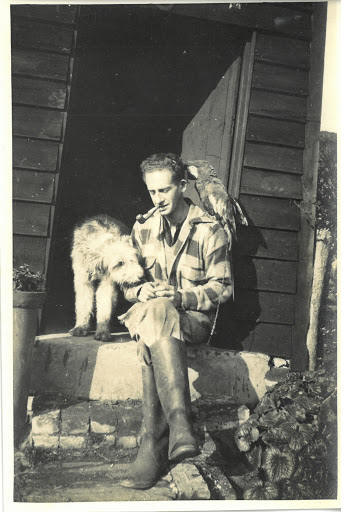
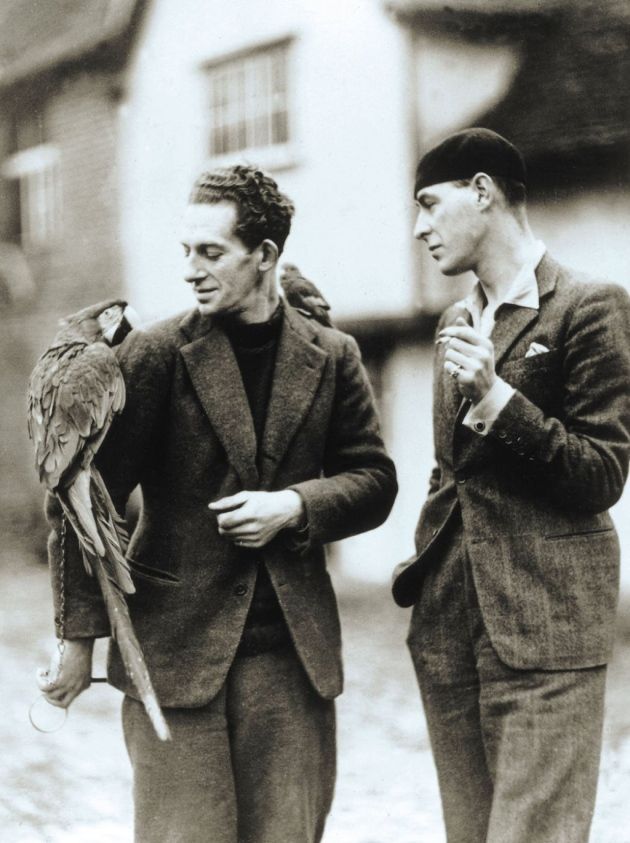
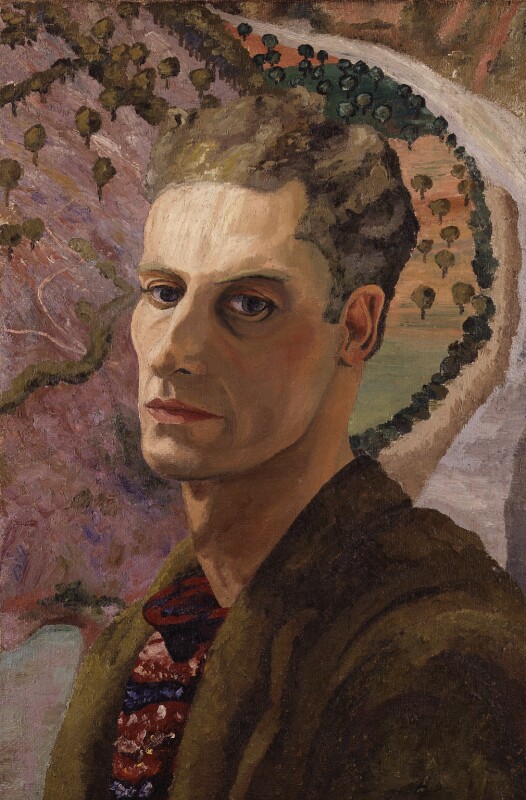
Self-Portrait
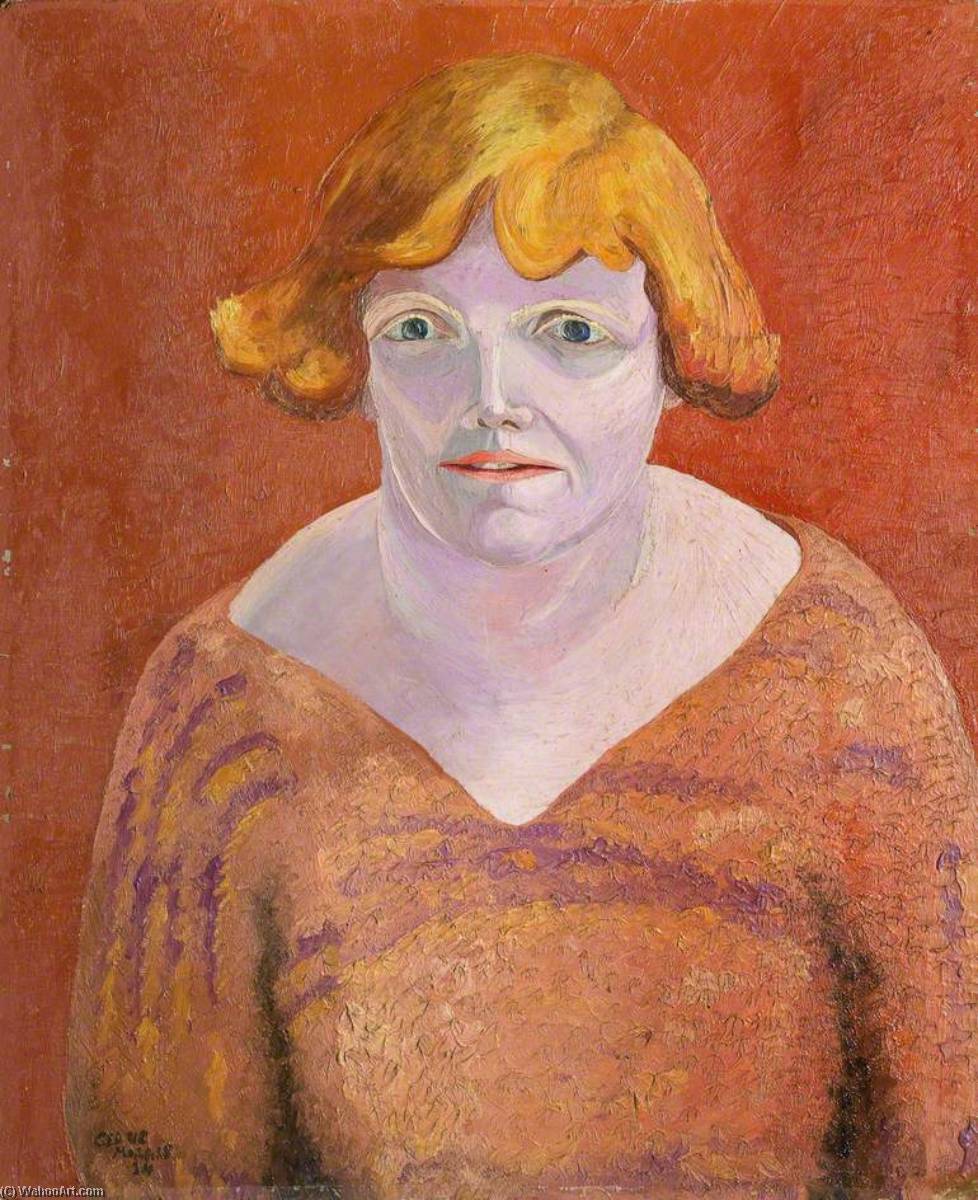
Mary Butts, by Cedric Morris
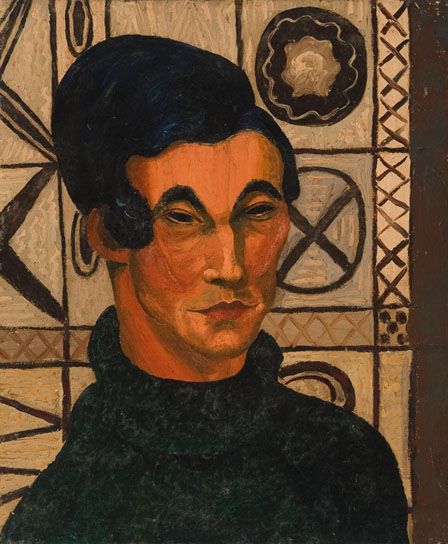
Paul Odo Cross by Cedric Morris
St Cyprian's Lodge, Eastbourne
Having failed the entrance exams for an army commission, at the age of 17 he set out on a steamship to Ontario, Canada, to work on a farm. After a succession of jobs, including as a dishwasher and bellboy in New York City, he returned to South Wales, and then entered the Royal College of Music, London, to study singing. But he gave up singing for painting, and went to Paris, where from April 1914 he studied at the Académie Delécluse in Montparnasse before the interruption of World War I. He attempted to join the Artists Rifles, which declared him medically unsuitable for active duty. He spent the war working as a trainer at Lord Rosslyn's stables at Theale, Berkshire, but was discharged when the Remounts took over the stables in 1917. Morris moved to Cornwall in south-west Englad where he became a fast friend with painter Frances Hodgkins. It was also in Cornwall that he developed his other lifelong study and passion, floriculture. On one of his frequent visits to London in November 1918, Morris attended a celebration of the Armistice hosted by Arthur Lett-Haines, known to all as Lett, at his house at 2 Carlyle Square, Chelsea; a meeting that would forever chane the course of his life.
Morris fell in love with Arthur Lett-Haines. He moved in with Lett-Haines and his wife, Gertrude Aimee Lincoln, the granddaughter of Abraham Lincoln. After Gertrude left for America the two men spent the rest of their lives together. Although both had affairs, Morris with the painter John Aldridge and artist Paul Odo, and Lett-Haines with Stella Hamilton and Kathleen Hale.[2]
During World War I he joined the Artists Rifles, but before embarking for France was declared medically unfit for action in consequence of the effects of a failed operation during his childhood. As an experienced horseman, however, he was allocated to the training of remounts at Lord Rosslyn's stables at Theale, Berkshire. He worked in the company of Alfred Munnings, under Cecil Aldin. He was discharged from this when the army took over the remounts in 1917.[3]
Morris went to Zennor in Cornwall, where he studied plants and painted water colours. There he became friendly with the painter Frances Hodgkins, whose portrait he painted. At the time of the Armistice with Germany in November 1918 he was in London, when he met the painter Arthur Lett-Haines. Morris and Lett-Haines fell in love and began a life-time relationship, and shortly afterwards Morris moved in with Lett-Haines and his second wife, Aimee. The trio planned to go to America, but in the event Aimee Lett-Haines left on her own, and the two men moved to Cornwall. They converted a row of cottages at Newlyn into a larger house and stayed there until the end of 1920, when they moved to Paris.
Paris was their base for the next five years, when they travelled extensively in Europe. Morris also studied at the Academies Moderne and La Grande Chaumiere. Morris had successful exhibitions in London in 1924 and 1926, and later in that year they settled back in Britain.
After staying with his sister Nancy Morris in Corfe Morris and Haines found a studio in London at Great Ormond Street to which they moved in 1927. Morris became a member of the London Artists Association and the Seven and Five Society, for which he was proposed by Winifred Nicholson and seconded by Ben Nicholson. He became especially friendly with the painter Christopher Wood, and renewed friendship with Frances Hodgkins. At the end of the 1920s Morris became involved with much commercial work designing textiles for Cresta Silks with Paul Nash and posters for Shell and B. P..
Morris chose the country life to pursue his passion for horticulture. Early in 1929 Morris and his companion took the lease of Pound Farm, Higham, Suffolk, and in February 1930 they gave up the London studio.
In 1932 the owner of Pound Farm, Vivien Gribble, who was for a while a student, died and left it to Morris. Morris had resigned from the Seven and Five Society in 1930 and he resigned from the London Artist's Association in 1933. There were many visitors at Pound Farm, including Frances Hodgkins, Barbara Hepworth and John Skeaping. Joan Warburton who was a student described Pound Farm as a paradise, mainly because of the spectacular gardens which Morris developed. She was also impressed by their spectacular parties.
Morris often went painting in his native South Wales, and in 1935 at the time of the Depression was moved by the plight of the people of South Wales Valleys. He initiated a major touring exhibition of Welsh art in 1935, and was a regular teacher at Mary Horsfall's Art's centre at Merthyr Tydfil. In 1935 he painted two large flower murals on board the liner Queen Mary. In late 1937 Morris and Haines joined the Hadleigh Labour Party after attending a meeting addressed by Professor Catlin.
Morris and Lett-Haines opened the East Anglian School of Painting and Drawing at Dedham in April 1937. Within a year they had 60 students. Lucian Freud was one of his most noted students.
In 1939 the building at Dedham was destroyed by fire (with several of Morris's paintings also destroyed) to the conspicuous enjoyment of Alfred Munnings. By the end of the year the school was re-established at Benton End. Paul Odo Cross, Cedric Morris' occasional lover, financed the acquisition of the new house. Benton End was a rambling 'Suffolk Pink' farmhouse on the outskirts of Hadleigh, set in a orchard. Dating from the 16th century, the house is reputed to have been designed by Sir Peter Cheyney and since 1950 it has been Grade II* listed.[4]
Morris was intolerant of cruelty to animals and at Benton End had a running feud with a local gamekeeper who shot cats and dogs - until the latter tripped over his shotgun and killed himself.[5]
His housekeeper was Millie Hayes (née Gomersall, 1916-2001). She studied at Benton End under Morris and his 1936 portrait of her was displayed at the Minories Art Gallery, Colchester. In 1941 she exhibited the painting ''Landscape from the Garden'' at the Ipswich Art Club. Another painting ''Hadleigh'' was sold at auction by Christie's in 1997. Morris painted her portrait a second time in 1964 and she was a beneficiary under his will. She died at Ipswich in 2001 and a small commemorative headstone is located at the back of Morris's in Hadleigh cemetery.[6]
In addition to running the school, Morris indulged his passion for plants. He grew about 1,000 new Iris seedlings each year and opened Benton End to display his collection. He produced at least 90 named varieties, 45 of which were registered with the American Iris Society.[7] Some were sold commercially and exhibited at the Chelsea Flower Show. Many of his named varieties carried the prefix "Benton", including 'Benton Menace' named after his cats, and 'Benton Rubeo', named for his pet macaw. He also used to walk the fields and hedgerows searching for softer colour variants of poppies. Morris's work as a horticulturalist resulted in a number of plants being names after him.
Morris bred birds as a hobby and his knowledge and understanding of them may have contributed to his ability to paint them. In his ''Peregrin Falcoms'' (1942), the birds are presented in a slightly formalised and simplified manner. His intention, he explained, was to "provoke a lively sympathy with the mood of the birds which ornithological exactitude may tend to destroy."[8]
In 1946, along with Henry Collins, Lett Haines, John Nash and Roderic Barrett, Morris became one of the founders of Colchester Art Society and later the Society's President.[9]
In 1947 the Morris baronetcy came to his father from a distant cousin three months before his death and Cedric Morris succeeded his father in the same year to become the 9th Baronet Morris. He became a lecturer at the Royal College of Art in 1950. From about 1975 Morris virtually gave up painting because of failing eyesight.
He died on 8 February 1982. His former pupil, Maggi Hambling visited him on the day before his death and afterwards drew a portrait of him. His grave, hear that of Arthur Lett-Haines, in Hadleigh cemetery is marked by a Welsh slate headstone cut by Donald Simpson.
My published books: